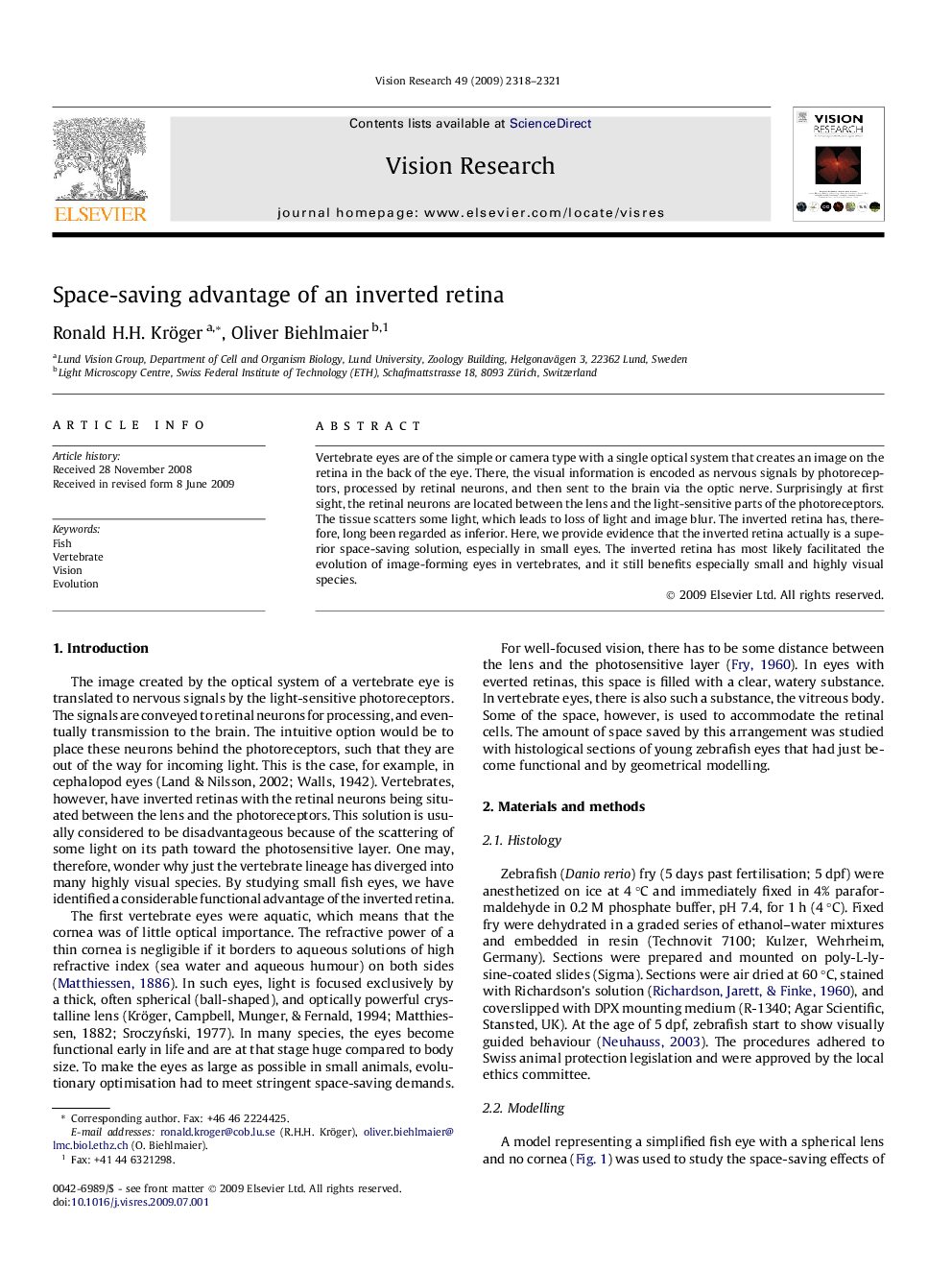| Article ID | Journal | Published Year | Pages | File Type |
|---|---|---|---|---|
| 6203943 | Vision Research | 2009 | 4 Pages |
Vertebrate eyes are of the simple or camera type with a single optical system that creates an image on the retina in the back of the eye. There, the visual information is encoded as nervous signals by photoreceptors, processed by retinal neurons, and then sent to the brain via the optic nerve. Surprisingly at first sight, the retinal neurons are located between the lens and the light-sensitive parts of the photoreceptors. The tissue scatters some light, which leads to loss of light and image blur. The inverted retina has, therefore, long been regarded as inferior. Here, we provide evidence that the inverted retina actually is a superior space-saving solution, especially in small eyes. The inverted retina has most likely facilitated the evolution of image-forming eyes in vertebrates, and it still benefits especially small and highly visual species.
